Search
Hurricane Katrina 20 Years Later: Two Dioceses Share Uncommon Bond Through Disaster Recovery
-
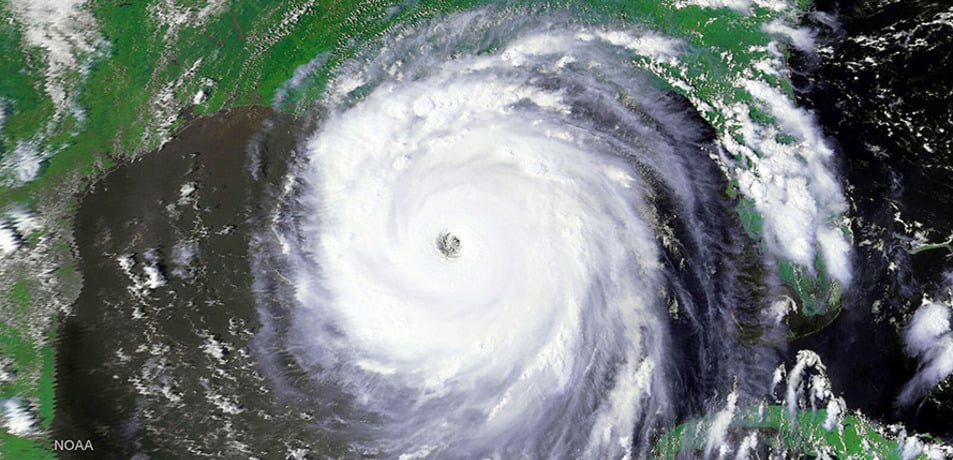 August 28, 2025As New Orleans sat in the bullseye of Hurricane Katrina, which loomed as a Category 5 storm in the Gulf of Mexico, highways were jammed with people fleeing the area. Archbishop Emeritus Alfred C. Hughes, then Archbishop of the Archdiocese of New Orleans, evacuated to St. Joseph Abbey in St. Benedict.
August 28, 2025As New Orleans sat in the bullseye of Hurricane Katrina, which loomed as a Category 5 storm in the Gulf of Mexico, highways were jammed with people fleeing the area. Archbishop Emeritus Alfred C. Hughes, then Archbishop of the Archdiocese of New Orleans, evacuated to St. Joseph Abbey in St. Benedict.
Making landfall in the New Orleans area as a Category 3 storm on Aug. 29, 2005, Hurricane Katrina unleashed massive destruction on the city. Its storm surge caused 50 levee breaches, leaving 80 percent of New Orleans underwater. The hurricane was responsible for the death of 1,400 people and hundreds of billions of dollars in damage.
Two days after the storm, St. Joseph seminarians and volunteers with chainsaws cleared a path out through the woods for Archbishop Hughes to make his way 79 miles north to Baton Rouge. He did not have communication access, but knew he would find a place of welcome and support in the Diocese of Baton Rouge. There he could begin the daunting task of leading the archdiocese through recovery. The archbishop emeritus had served as bishop of the Diocese of Baton Rouge from 1993-2001 and knew the leadership and clergy. He stayed temporarily at Our Lady of Mercy Church in Baton Rouge.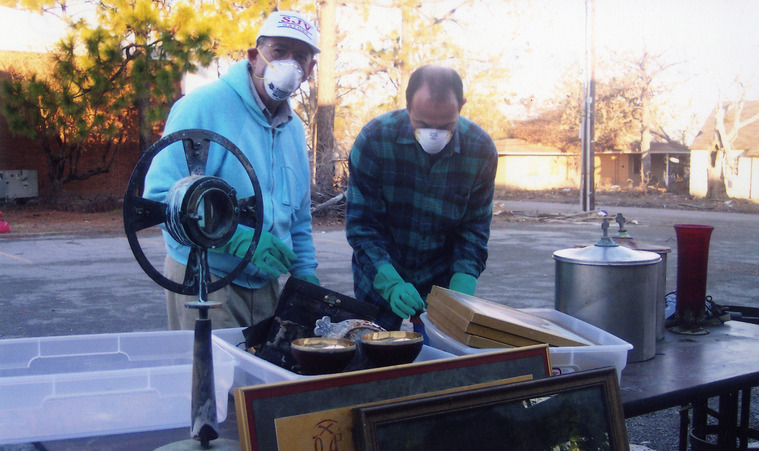 Msgr. Doug Doussan, left, then pastor of St. Gabriel the Archangel Church New Orleans, and Tom Ranzino, then pastor of St. Jean Vianney Church in Baton Rouge, examined church vessels and icons. Archive photos | The Catholic Commentator
Msgr. Doug Doussan, left, then pastor of St. Gabriel the Archangel Church New Orleans, and Tom Ranzino, then pastor of St. Jean Vianney Church in Baton Rouge, examined church vessels and icons. Archive photos | The Catholic Commentator
Watching the cable news on the television at the OLOM rectory, Archbishop Hughes got a glimpse of the unfolding catastrophe.
"I couldn't sleep," Archbishop Hughes said. "At that point, I become aware of the extent of the devastation, what had happened with the breaching of the levees and the flooding. I was overwhelmed. I didn't know where to begin. What to say, what to do."
He poured his heart out to the Lord in the OLOM adoration chapel. At first the Lord didn't appear to answer.
"This struck me ... Lord, are you asking me to be an icon (of healing)? It doesn't matter what I say or what I do? My presence in your name to the people is the most important way to do this? At that moment, peace came to my heart that freed me to bring together the leadership that was located and evacuated in the Baton Rouge area."
The two dioceses forged a relationship that was closer than any the archbishop had seen as they worked together on the recovery.
The Diocese of Baton Rouge administration, Catholic schools, and parishes unleashed a wave of care and generosity that eclipsed Hurricane Katrina's flood waters. The Society of St. Vincent de Pauland Catholic C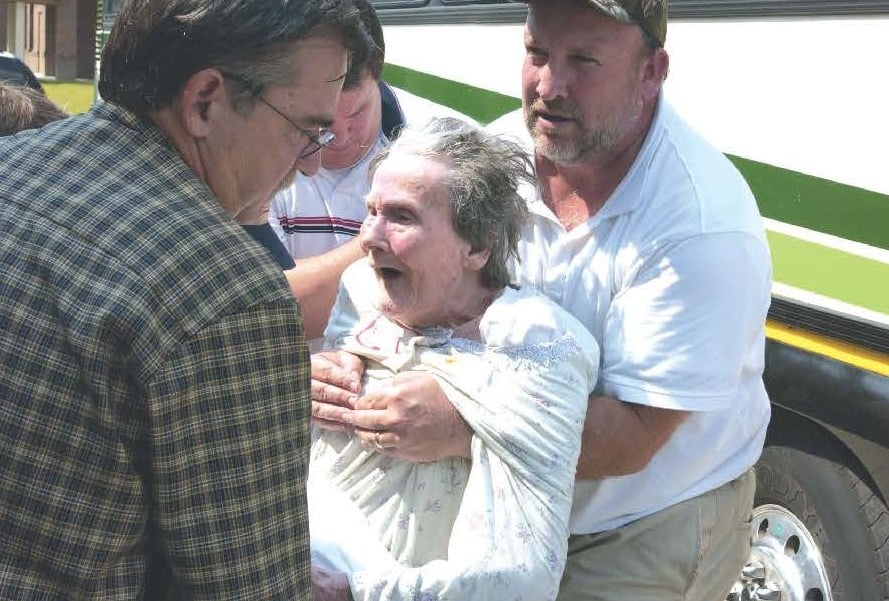 Volunteers at St. George lifted Dorothy Boudreaux, a nursing home resident of Chateau de Notre Dame in New Orleans, into a bus headed for one of four nursing homes in Crowley, Eunice, Jennings, and Lafayette. The parish was a five-day rest stop for 105 frail seniors and 33 independent living residents who had been evacuated from New Orleans because of Hurricane Katrina. harities "hit the ground running" meeting immediate needs.
Volunteers at St. George lifted Dorothy Boudreaux, a nursing home resident of Chateau de Notre Dame in New Orleans, into a bus headed for one of four nursing homes in Crowley, Eunice, Jennings, and Lafayette. The parish was a five-day rest stop for 105 frail seniors and 33 independent living residents who had been evacuated from New Orleans because of Hurricane Katrina. harities "hit the ground running" meeting immediate needs.
"It was all hands on deck," said Bishop Emeritus Robert W. Muench, then bishop of Baton Rouge, who was raised in New Orleans.
Clergy and volunteers visited the shelters and heard evacuee's harrowing stories.
"One man was inconsolable," said Archbishop Emeritus Hughes. "He brought his panicking wife to the roof of his house ... But he lost his grip on her. She tried to grab his T-shirt, but the shirt came off and he never saw her again."
He added, "Another woman lifted up a plastic bag and said, 'This is all I have. The Lord has given, and the Lord has taken away. I need to praise the name of the Lord.' She was taking that from the Book of Job and expressing it in a very real way."
Parishes actively assisted evacuees.
Msgr. Douglass Doussan, deceased, then pastor of St. Gabriel the Archangel Church in New Orleans, stayed at St. Jean Vianney Church in Baton Rouge. He, Father Tom Ranzino, director of the Office of Worship and then pastor of SJV, and other religious worked together in the SJV office.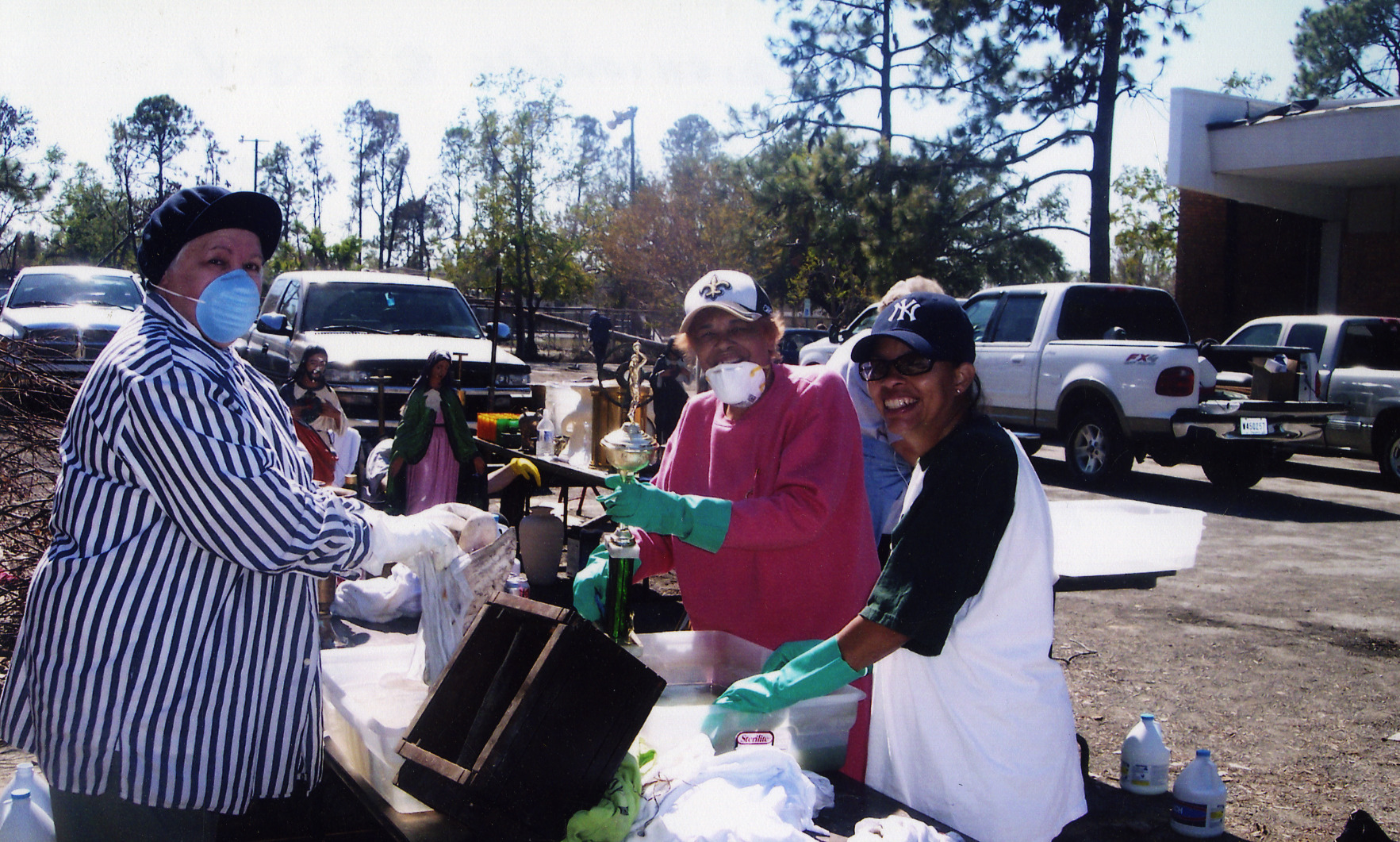 St. Gabriel, New Orleans parishioners and St. Jean Vianney parishioners cleaned items from St. Gabriel’s church and parish office. Pictured, from left, are Marie Sinitere, St. Jean Vianney, Mary Hardesty, St. Gabriel, and Alaina Hardesty, St. Gabriel..
St. Gabriel, New Orleans parishioners and St. Jean Vianney parishioners cleaned items from St. Gabriel’s church and parish office. Pictured, from left, are Marie Sinitere, St. Jean Vianney, Mary Hardesty, St. Gabriel, and Alaina Hardesty, St. Gabriel..
Msgr. Doussan found out where the relocated New priests were living. In an emotionally intense face-to-face meeting of New Orleans priests at SJV, Archbishop Hughes shared what he knew so far about what happened during the hurricane. He also asked how they were doing.
The archbishop made his way back to New Orleans as soon as he could.
After surveying the damage, it was evident to Msgr. Doussan that St. Gabriel, an African American Church, had flooded terribly, according to Father Ranzino.
"I remember (Msgr.) Doug saying, "We've got to save this parish," Father Ranzino said.
When it became clear that St. Gabriel was not going to be renovated, Msgr. Doussan asked Archbishop Hughes if the parish could remain open if money was raised to renovate it. Sensing his distress, Father Ranzino asked Msgr. Doussan, "What would it be like if you let us help you clean it up?"
SJV parishioners had built a friendship with Msgr. Dousson and happily answered his call for help.
"We would spend the whole day mucking out the church, cleaning the church, washing the church, working with their parishioners trying to do the same thing, and we spent a number of months doing that," said Father Ranzino.
With donations and other help with the renovations, the archbishop blessed the newly renovated church over a year later.
"It was a great day, a great celebration," said Father Ranzino.
St. George Church in Baton Rouge was among the churches sheltering evacuees. About 135 residents of Chateau de Notre Dame Community Care Center in New Orleans were housed in the St. George School gym, according to Ann Bertsch, then principal.
"It was a blessed and holy time," said Bertsch. "At mealtimes, we put out an all call and said come if you can and help feed. People lined up outside the do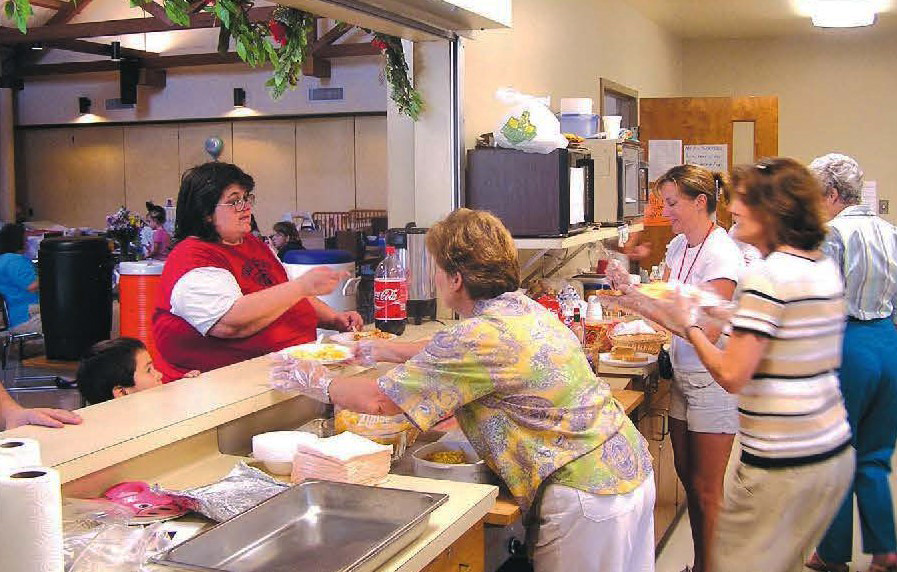 Volunteers from St. Patrick Church in Baton Rouge served food to people in its families with newborn babies shelter. or wanting to come and help. It was really a time of giving and actually seeing these elderly people who were at different stages near the end of their life. It was very moving. Every part of our parish responded."
Volunteers from St. Patrick Church in Baton Rouge served food to people in its families with newborn babies shelter. or wanting to come and help. It was really a time of giving and actually seeing these elderly people who were at different stages near the end of their life. It was very moving. Every part of our parish responded."
The diocesan schools opened their classrooms to New Orleans students. Enrollment in diocesan Catholic School during the 2004-05 school year was 16,315 students. After the hurricane, the student population surged to 17,477 for the year 2005-06 school year, according to the Catholic Schools Office of the Diocese of Baton Rouge.
Bishop Emeritus Muench noted, "It was a challenging time. For example, Brother Martin High School (in New Orleans) and Catholic High School (in Baton Rouge) changed their schedules so that the students from Catholic High came in earlier and the students from Brother Martin came in the afternoon."
St. Joseph's Academy, in Baton Rouge, likewise, had afternoon classes for New Orleans students.
Bishop Emeritus Muench emphasized that amidst the chaos in the wake of Hurricane Katrina, God was orchestrating a divine plan that left both dioceses stronger.
"It was definitely the grace of the Trinity and the saints, in heaven and those on Earth. People just came together. They rolled up their sleeves and they did whatever they could do," he said.
